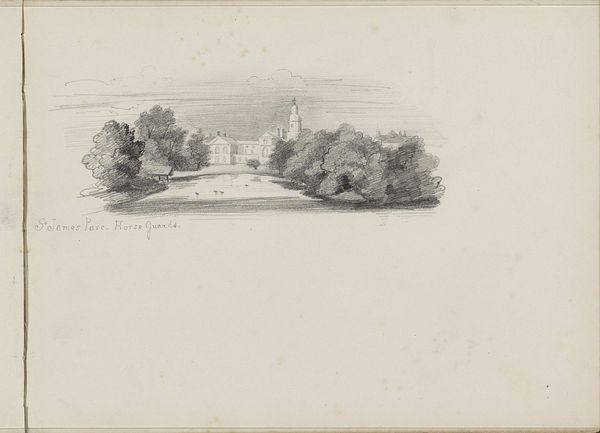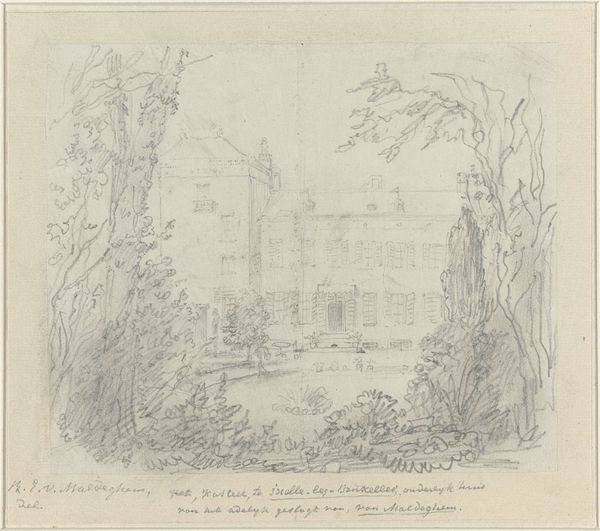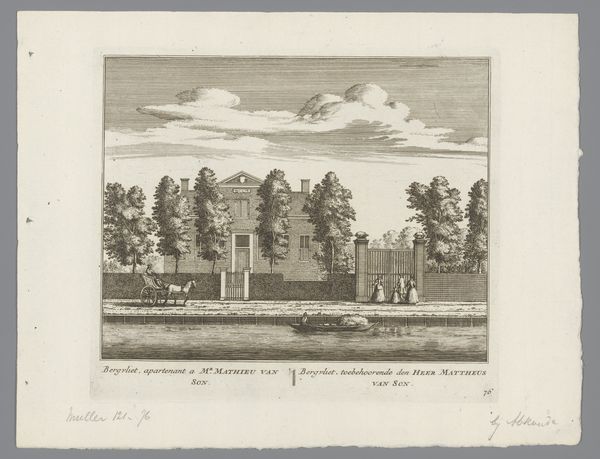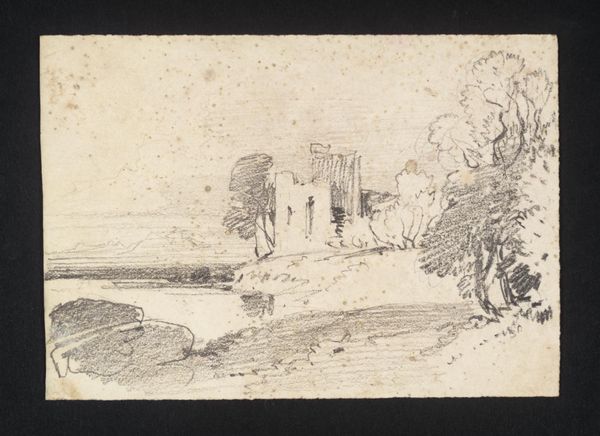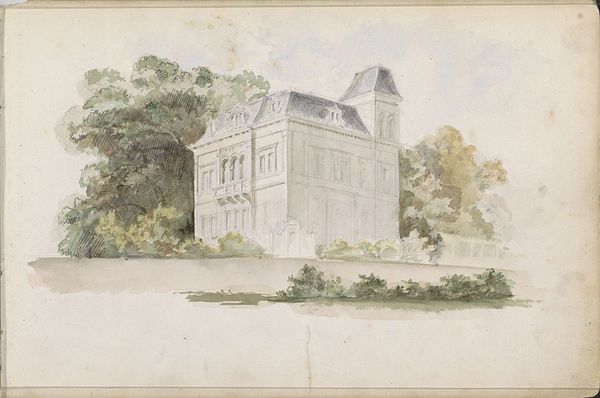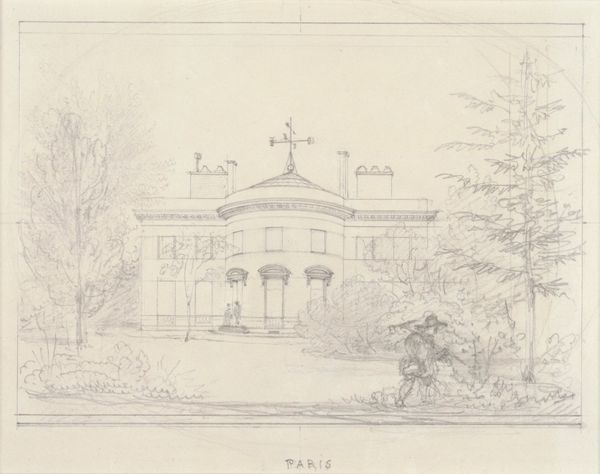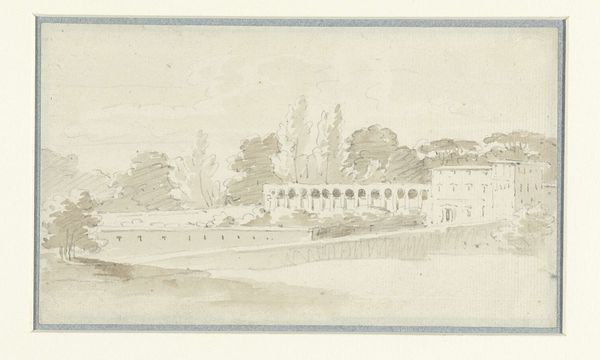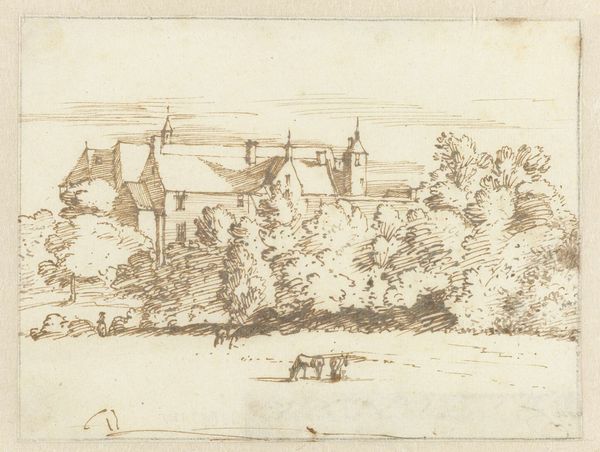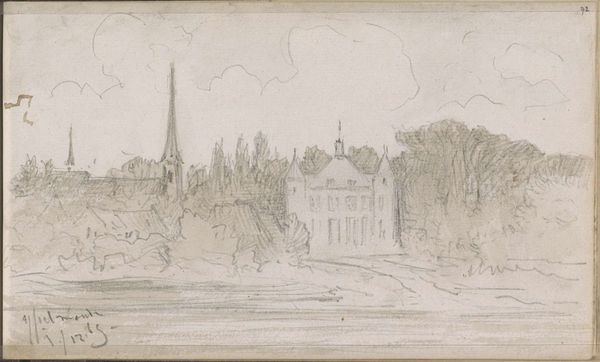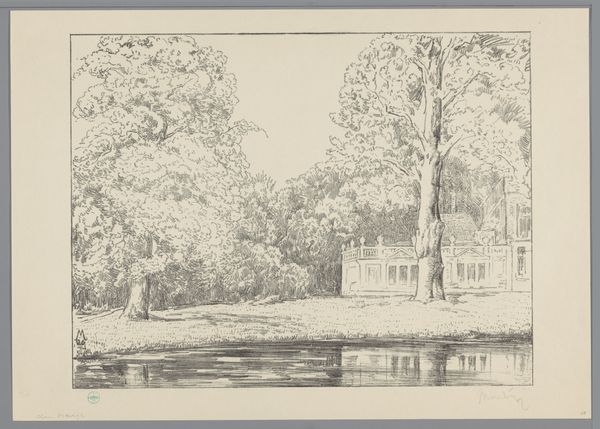
Dimensions: height 210 mm, width 275 mm
Copyright: Rijks Museum: Open Domain
Editor: So, this is "Paleis van Fontainebleau," a pencil drawing from 1858. It's currently at the Rijksmuseum, and the artist is Gerrit Postma. It feels like a quick study, almost dreamlike. What can you tell me about this work? Curator: What I find fascinating is the almost casual depiction of such a historically significant location. Fontainebleau was a royal residence for centuries, deeply embedded in French national identity. But here, it’s presented as a quiet, personal encounter, stripped of its regal power. Postma is encountering the palace outside its normal socio-political usage, almost undermining what that power structure has to stand for. Why do you think that Postma decided to render it this way? Editor: It does seem like a very private observation. The muted tones and the unfinished quality lend a sense of intimacy. Almost like he is capturing a feeling or an emotion, rather than the palace itself. It doesn't seem at all political. Curator: But can art ever really be apolitical? Even in its intimacy, Postma's sketch makes a statement. The lack of grandeur, the focus on nature surrounding the palace - perhaps this reflects a shift in power dynamics during that period. The Palace now more like a symbol of nature rather than the monarchy? Or maybe even a critique of it? How can this informal mode capture a social observation on power structures and class structures? Editor: I see what you mean. I hadn't considered how even a simple sketch could reflect such complex issues. So, by choosing to portray the palace in this unassuming way, Postma may have been subtly questioning the established order? Curator: Precisely. Consider the Romantic movement. They often explored personal emotion and the sublime power of nature as alternatives to established authority. So, Postma’s informal depiction aligns with those values and gives the piece cultural and social relevance. What have you gleaned from the sketch? Editor: I think it's made me realize that you can read so much into a piece, even what seems like a simple study can hold so much history and culture and maybe more than meets the eye. Curator: Precisely, art holds social and cultural data that's more relevant than initially viewed.
Comments
No comments
Be the first to comment and join the conversation on the ultimate creative platform.
